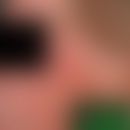Synonym(s)
HistoryThis section has been translated automatically.
DefinitionThis section has been translated automatically.
Characteristic, but unspecific, eminently chronic, circumscribed, chafing-induced, itchy, plaque-like, inflammatorylichenoid reaction pattern of the skin, which is morphologically clinically decisively influenced by the different localizations and the chronic mechanical irritation. In the literature, different names have been coined for the lichen simplex chonicus in different regions (see below), but they are not to be considered as independent entities.
You might also be interested in
EtiopathogenesisThis section has been translated automatically.
Unresolved
A minus variant of atopic eczema is discussed.
However, atopic stigmata may be completely absent.
Relationships to gastrointestinal disorders, liver diseases, cholecystopathy, diabetes mellitus have been described.
Psychogenic factors: in many cases the symptoms are complained about; however, if patiently investigated, scratching crystallizes as an automated, sometimes pleasurable action.
ManifestationThis section has been translated automatically.
w>m; First manifestation in middle and higher adulthood, less often in childhood.
LocalizationThis section has been translated automatically.
Especially neck region(lichen nuchae): "thoughtful" rubbing of neck areas.
Chin region (follicular keratosis of the chin, see there): Supporting the chin on the hands;
Stretching sides of forearms
Stretching sides of lower legs(Pretibial pruritic papular dermatosis): Rubbing lower legs against each other
Elbows: propping up
Inner sides of thighs and ankle regions (frequent rubbing of ankle areas against each other; possible verrucous component - verrucous lichen simplex chronicus)
sacral region (rubbing effects in idiopathic pruritus - see also Notalgia paraesthetica)
Scrotum and vulva (here co-triggering are occlusive effects, due to tight-fitting clothes - Chan MP et al. 2015). See also scrotal dermatitis, vulvar dermatitis.
Clinical featuresThis section has been translated automatically.
The leading symptom is itching, which is perceived as severe and agonizing and may be intensified in stressful situations. There are 10-15 cm roundish or oval, rarely elongated or striate plaques, typically with a three-zone structure: planar central lichenification, marginal lichenoid nodules, peripheral hyperpigmentation. The plaques are composed of 0.1-0.2 cm, solid, planar, gray to brown-reddish or skin-colored, not infrequently scratched, lichenoid papules. Lateral viewing of the foci often reveals a matte (lichenoid) sheen to the lesions. The three-zone structure gives way to a homogeneous flatness of the rough papules/plaques when a verrucous component has a superimposed effect (severe itching with consecutive rubbing effects).
HistologyThis section has been translated automatically.
Pronounced, clumsy acanthosis with irregular elongation of the mostly bulbously raised reteleasts. Severe orthohyperkeratosis with focal parahyperkeratosis. Wide capillaries in the papillary stratum and in the upper dermis. Predominantly vascular, but also diffuse, rather sparse lymphohistiocytic infiltrate. Mostly distinct fibrosis of the dermis, with collagen bundles running vertically to the epidermis. The histological picture requires an exact clinical correlate for its interpretation.
Differential diagnosisThis section has been translated automatically.
TherapyThis section has been translated automatically.
The disease usually proves to be extremely resistant to therapy.
Therapeutic guidelines:
- The therapy of lichen simplex chronicus is to be applied as a long-term strategy!
- It should be made clear that this is an eminently chronic disease!
- If necessary, a psychotherapist should be involved in the therapy at an early stage!
- Antihistamines can be used against the itching. The success is moderate. Better are glucocorticoid-containing ointments e.g. betamethasone valerate R029 or triamcinolone acetonide-containing creams or ointments.
- For secondary infections, combination therapeutics such as clioquinol-containing glucocorticoid externals(e.g., Locacorten-Vioform) or triclosan/glucocorticoid combinations (Duogalen cream) are indicated.
- Occlusive dressings can always be applied in the short term.
- Alternatively, tacrolimus-containing topical preparations (0.03% Protopic ointment) can be used.
Good results are obtained with multiple injections of glucocorticoid crystal suspension (Volon A 10 crystal suspension mixed with 1% xylocaine).
In suitable localization, cryosurgery (open spray procedure, freeze 1-2 times briefly) can be used and, if necessary, combined with triamcinolone acetonide subinjection. Own experience is quite positive.
If the localization is suitable, local PUVA therapy can be used. In the case of genital localization, in addition to the above measures, we recommend consistent application of sitz baths, if necessary with tanning additives (e.g. Tannosynt).
Dermatological climatic therapy (North Sea baths) brings very good results in some cases.
Radiation therapyThis section has been translated automatically.
Progression/forecastThis section has been translated automatically.
Note(s)This section has been translated automatically.
Clinic and histology are decisive for the diagnosis. The absence or presence of signs of atopy (increase in IgE levels, sensitization in the epicutaneous and prick test) does not help in the diagnosis!
In the case of genital or perianal lichen simplex chronicus it is recommended to wear suitable underwear that does not fit tightly.
LiteratureThis section has been translated automatically.
- Chan MP et al (2015) Vulvar dermatoses: a histopathologic review and classification of 183 cases. J Cutan catholic 42: 510-518
- Fartasch M et al (2000) Current status of the interdisciplinary model project "Neurodermatitis Education for Children and Adolescents". dermatologist 51: 299-301
- Lotti T et al(2008) Prurigo nodularis and lichen simplex chronicus. Dermatol Ther 21:42-46.
- Niedner R (2003) Topical corticosteroids versus topical inhibitors of calcineurin. dermatologist 54: 338-341
- Pandhi D et al (2001) Lupus vulgaris mimicking lichen simplex chronicus. J Dermatol 28: 369-372
- Tan ES et al(2015) Effective treatment of scrotal simplex chronicus with 0.1% tacrolimus ointment: an observational study. Journal of the European Academy of Dermatology and Venereology 29:1448-1449.
- Vidal E (1886) Du lichen (lichen, prurigo, strophulus). Ann Dermatol Syphilogr (Paris) 7: 133-154
- Virgili A et al (2003) Evaluation of contact sensitization in vulvar lichen simplex chronicus. A proposal for a battery of selected allergens. J Reprod Med 48: 33-36
Incoming links (30)
Ain; Amyloidosis macular cutaneous; Anal eczema contact allergic; Anosacral cutaneous amyloidosis; Betamethasone valerate cream hydrophilic 0.025/0.05 or 0.1% (nrf 11.37.); Dermatitis of the vulva ; Dystrophic epidermolysis bullosa pruriginosa recessive; Erythrasma; Follicular keratosis of the chin; Fox-fordyce's disease; ... Show allOutgoing links (22)
Adverse drug reactions of the skin; Antihistamines, systemic; Atopic dermatitis (overview); Betamethasone; Betamethasone valerate cream hydrophilic 0.025/0.05 or 0.1% (nrf 11.37.); Chronic prurigo; Climatotherapy; Clioquinol; Contact dermatitis allergic; Cryosurgery; ... Show allDisclaimer
Please ask your physician for a reliable diagnosis. This website is only meant as a reference.




















